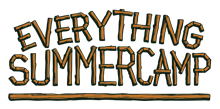Hey, Camp Folks!
If you’ve ever shopped our site before, then you already know—we’re Everything Summer Camp, your one-stop shop for everything on your child’s camp packing list. However, when we first started making trunks in 1987, we didn’t offer any camping gear or other trunk accessories at all.
Several years later we added wheels and then came our nameplates and padlocks a little further down the line. And for a long time these were the only three accessories we offered.
It was 20 years on before we added another accessory and the first one we added was the Snap-On Duffle which was our first product all about summer camp. Back then we had never sold a product that focused completely on summer camp. In fact, we weren’t even called Everything Summer Camp yet.
This duffle, however, was designed as an extension of a camper’s camp trunk to accommodate kids whose packing lists were just a bit too big for our trunks. Our original design for the Snap-On Duffle was only compatible with our Traditional Steel and Designer Trunks and we had another duffel—the Piggy Back—which was compatible with our Pop Up Soft Trunks.
No other duffel attaches perfectly to your camp trunk like our Snap-On Duffle found only here at Everything Summer Camp—the home of C&N camp trunks! Common for moving bulkier items like pillows and other bedding, this accompanying duffel is as simple as can be! It snaps onto our camp trunks within seconds so you can move both pieces as one!
Make transportation to and from your summer camp cabin as easy as possible with this cool idea that moves your trunk and duffle as one unit. Thanks for reading. And, as always, Happy Camping!
- John










